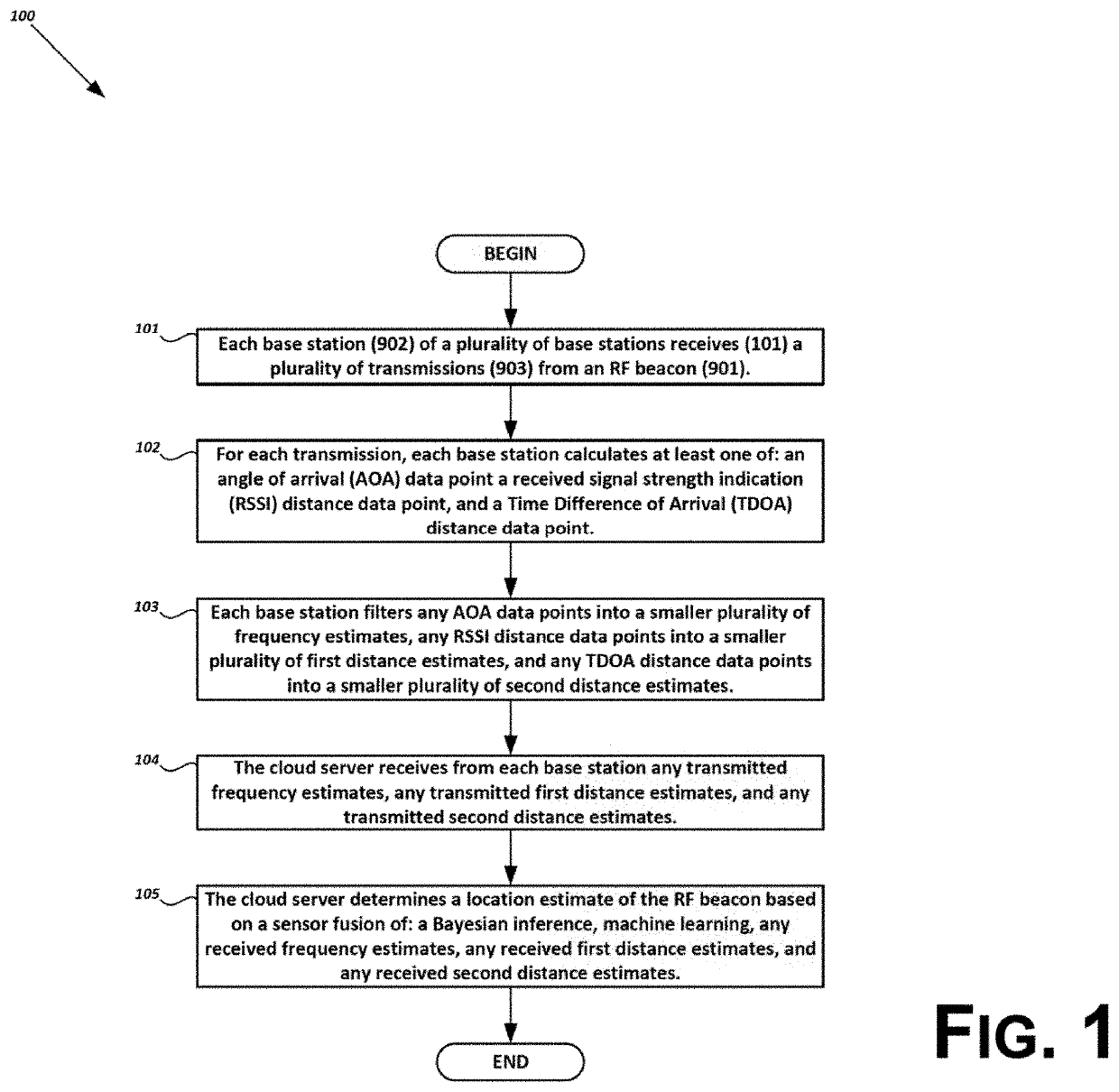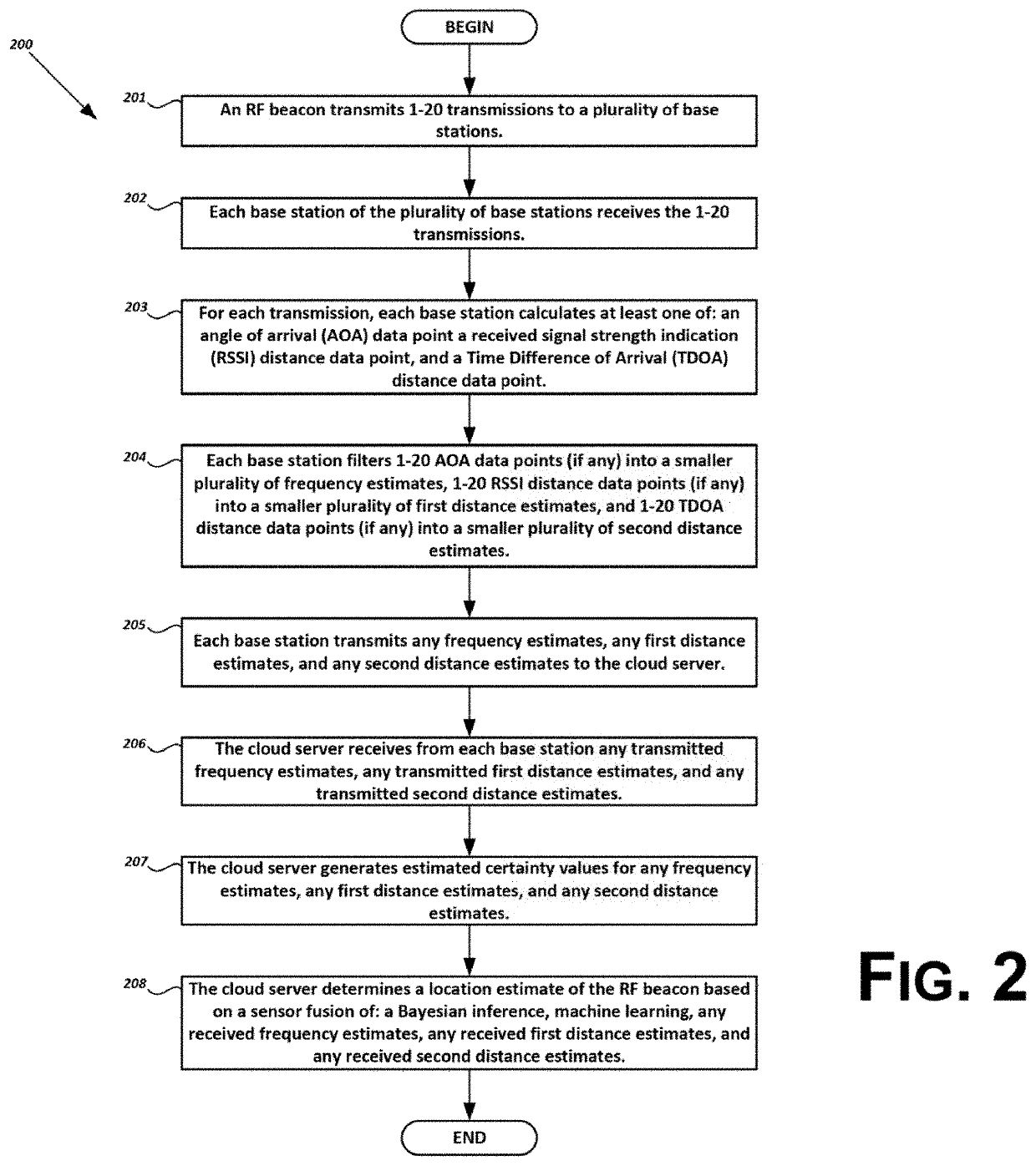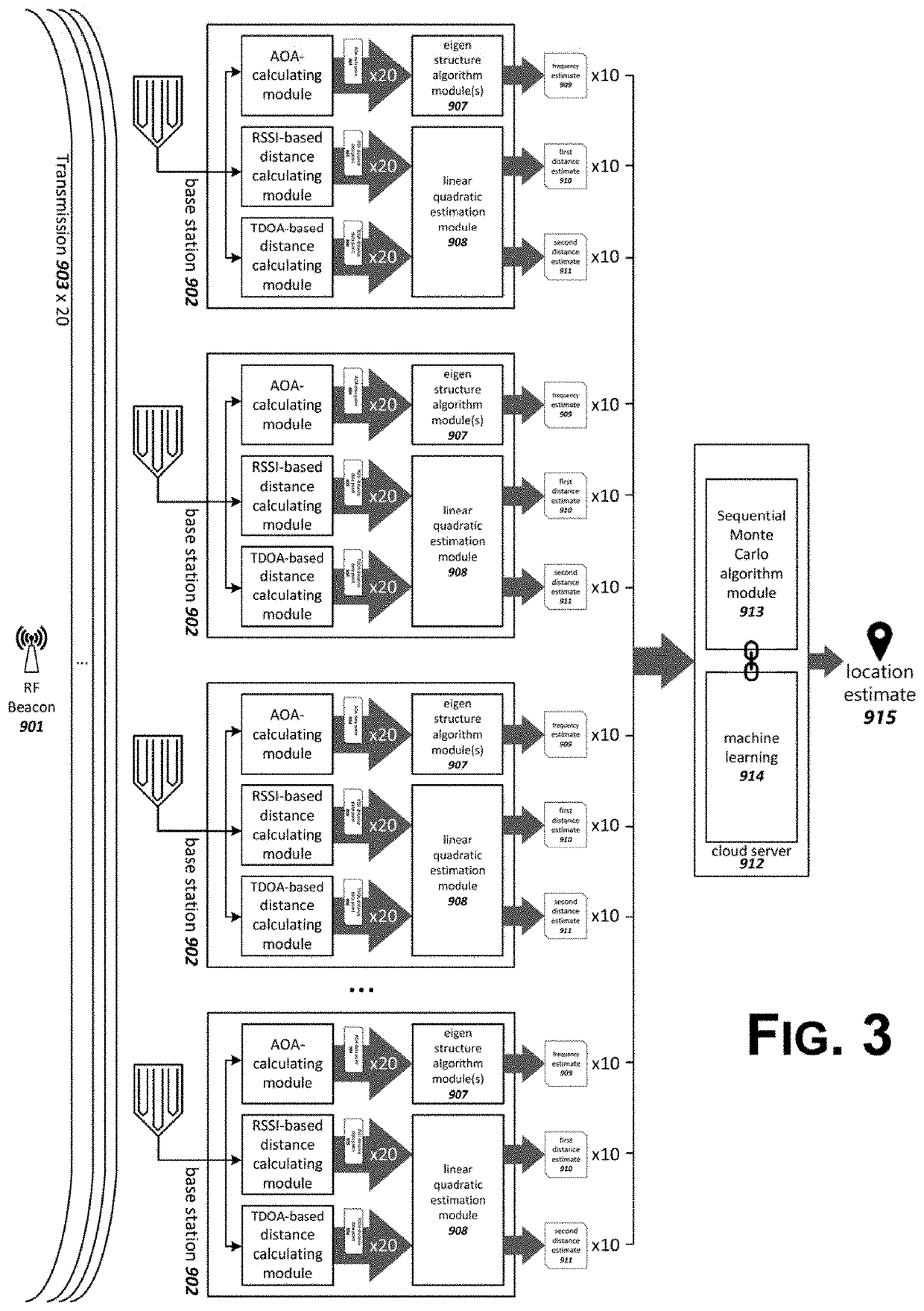Distributed signal processing for radiofrequency indoor localization
a technology of distributed signal processing and indoor localization, which is applied in the direction of multi-channel direction-finding systems using radio waves, instruments, high-level techniques, etc., can solve the problems of excessive consumption of energy, substantial ambient interference in a hospital that cannot be resolved, and insufficient filtration of rssi data points using probabilistic inference, so as to increase the range of dp connections and reduce overall energy consumption , the effect of increasing the overall accuracy of the system
- Summary
- Abstract
- Description
- Claims
- Application Information
AI Technical Summary
Benefits of technology
Problems solved by technology
Method used
Image
Examples
Embodiment Construction
[0024]The following description sets forth numerous specific details (e.g., specific configurations, parameters, examples, etc.) of the disclosed embodiments, examples of which are illustrated in the accompanying drawings. It should be recognized, however, that such description is not intended as a limitation on the scope of the disclosed embodiments, but is intended to elaborate upon the description of these embodiments. It will be evident to a person of ordinary skill in the art that the present invention can be practiced without every specific detail described infra. Moreover, well-known methods, procedures, components, and circuits have not been described in detail so as not to unnecessarily obscure aspects of the embodiments of the present invention.
[0025]It is fully contemplated that the features, components, and / or steps described with respect to one embodiment may be combined with the features, components, and / or steps described with respect to other embodiments of the prese...
PUM
 Login to View More
Login to View More Abstract
Description
Claims
Application Information
 Login to View More
Login to View More - R&D
- Intellectual Property
- Life Sciences
- Materials
- Tech Scout
- Unparalleled Data Quality
- Higher Quality Content
- 60% Fewer Hallucinations
Browse by: Latest US Patents, China's latest patents, Technical Efficacy Thesaurus, Application Domain, Technology Topic, Popular Technical Reports.
© 2025 PatSnap. All rights reserved.Legal|Privacy policy|Modern Slavery Act Transparency Statement|Sitemap|About US| Contact US: help@patsnap.com



